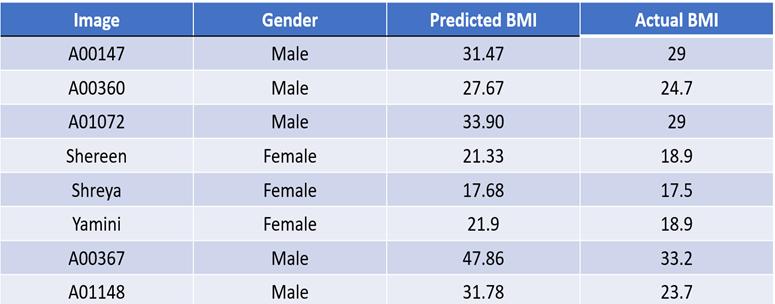
2 minute read
5. ARCHITECTURE
Figure2:Modelarchitecturefortheproject
All pre-trained models employ the fully linked layers at the end. In Figure 2, the layers that are appliedintheendaredepicted
Advertisement
We carry out Global Average Pooling prior to feeding the output of the pre-trained model into thefullyconnectedlayers.Themodelarchitecture presented in the above graphic includes one dropout layer with a dropout of 50% to prevent overfitting.
Additionally, the Gaussian Error Linear Unit (Gelu) activation function, shown in Figure 2 of the Model Architecture, combines the characteristics of the RELU activation function, Dropout,andZoneout.
As a result, it is employed in the architectural model since it tends to generalise better when thereismorenoiseinthedata.Theprototypecan be improved if a significantly larger dataset is used.
The layers typically pick up advanced features as thearchitectureadvancestowardstheoutputdue to the fact that layers close to the input in deep convolutional networks acquire fundamental propertieslikeedgesandcorners.Sothatthepretrained model can extract more characteristics fromthephotos,itusesa higherlearningratefor the new fully connected layers and a significantly lowerlearningrateforsomeofthefinallayers.
6. RESULTS
The advantages of the proposed system clearly outweigh the design, model and therefore the challenges of the existingsystem.Previouslythefacestakenasinputarenot aligned to the centre, but in the proposed system any titled, blur or distorted, inconsistent images can also be classified thus gradually reducing time and enhancing performance. Active shape model was largely used in the pre existingsystem,butthishas beeneliminatedbyusing preprocessing techniques such as StyleGAN technique which makes the inconsistent images similar, then DLIB 68 Landmark model comes into picture, which aligns, zoomsinandblursthesurroundingswhilefocusingonthe face. The models trained for the prediction of BMI in the proposed system which are VGG-Face,Inception-v3,VG-19 and Xception give the proposed system a huge advantage over the existing system since the mentioned models use Convolutional Neural Networks with numerous layers, while each being unique and support different functionalityby applyingthelatestdevelopments indeep learning therefore helping in efficient calculation and betteraccuracyoftheindividual’sBMI.
The technique will be used in subsequent research to simulatepopulation-level obesity ratesusingimagesfrom social media profiles. According to preliminary findings, a significantnumberofInstagramprofilepicturesrepresent variances in BMI that are both geographical and demographical.
References
[1] A. Haritosh, A. Gupta, E. S. Chahal, A. Misra and S. Chandra, ”A novel method to estimate Height, Weight and Body Mass Index from face images,” 2019 Twelfth International Conference on Contemporary Computing (IC3),2019,pp.1-6,doi:10.1109/IC3.2019.8844872.
[2] A. Dantcheva, P. Bilinski, F. Bremond, ”Show me your faceandIwill tell youyourheight, weightandbodymass index,” Proc. of 24th IAPR International Conference on PatternRecognition(ICPR),(Beijing,China),August2018.
[3] E. Kocabey, M. Camurcu, F. Ofli, Y. Aytar, J. Marin, A. Torralba, I. Weber, ”Face-to-BMI: Using Computer Vision toinferBodyMassIndexonSocialMedia.”Proceedingsof the International AAAI Conference on Web and Social Media(ICWSM),pp.572-575,2017.
[4] Guntuku and others 2015 Guntuku, S. C., et al. 2015. Doothers perceive you as you want them to?: Modeling person-alitybasedonselfies.InASM,21–26.
[5] H. Siddiqui, A. Rattani, D. R. Kisku and T. Dean, ”AlbasedBMIInferencefromFacialImages:AnApplicationto Weight Monitoring,” 2020 19th IEEE International Conference on Machine Learning and Applications (ICMLA),2020,pp.1101-1105.
Figure3:ComparisonbetweenActualandPredictedBMI
ConsideringtherelativedifferencebetweentheactualBMI andthepredictedBMI,theaccuracyacquiredis80.5%.
7. CONCLUSIONS
It has been found that those with higher BMIs are more likely to experience health problems. It has been discovered that there is a significant correlation between BMI and a person's face. Therefore, a method for predicting BMI from facial photos using deep learning is suggested. The Python CNN (convolution neural networks) technique is used to analyze the facial features anddetermineBMI.BeforeestimatingBMIbasedonthose aspects, CNN will utilize a photo as its input and extract thefacecharacteristicsfromthatinput.TheBMIdetection technique is used to centre the faces and pre-process the facialdata.
[6]Jiang,Min&Shang,Yuanyuan&Guo,Guodong.(2019). On Visual BMI Analysis from Facial Images. Image and VisionComputing.89.10.1016/j.imavis.2019.07.003.
[7] Lingyun Wen, Guodong Guo, ”A computational approach to body mass index prediction from face images”,ImageandVisionComputing,Volume31,Issue5, 2013,Pages392-400.
[8] M. Barr, G. Guo, S. Colby, M. Olfert, Detecting body mass index from a facial photograph in lifestyle intervention,Technologies6(3)(2018)83
[9] Mayer C, Windhager S, Schaefer K, Mitteroecker P (2017)BMIandWHRAreReflectedinFemaleFacialShape and Texture: A Geometric Morphometric Image Analysis. PLoS ONE 12(1): e0169336. doi:10.1371/journal.pone.0169336.


